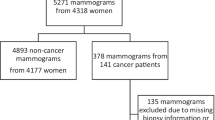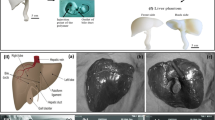Abstract
Palpation is an intuitive examination procedure in which the kinesthetic and tactile sensations of the physician are used. Although it has been widely used to detect and localize diseased tissues in many clinical fields, the procedure is subjective and dependent on the experience of the individual physician. Palpation results and biomechanics-based mechanical property characterization are possible solutions that can enable the acquisition of objective and quantitative information on abnormal tissue localization during diagnosis and surgery. This paper presents an integrated approach for robotic palpation combined with biomechanical soft tissue characterization. In particular, we propose a new palpation method that is inspired by the actual finger motions that occur during palpation procedures. To validate the proposed method, robotic palpation experiments on silicone soft tissue phantoms with embedded hard inclusions were performed and the force responses of the phantoms were measured using a robotic palpation system. Furthermore, we carried out a numerical analysis, simulating the experiments and estimating the objective and quantitative properties of the tissues. The results indicate that the proposed approach can differentiate diseased tissue from normal tissue and can characterize the mechanical information of diseased tissue, which means that this method can be applied as a means of abnormality localization to diagnose prostate cancers.






Similar content being viewed by others
References
Yan J, Scott PK, Fearing RS (1999) Inclusion probing: signal detection and haptic playback of 2D FEM and experimental data, IMECE’ 99, November 1999, Nashville
Satava RM, Morgan K, Sieburg HB, Mattheus R, Christensen JP (1995) Interactive technology and the new paradigm for healthcare. IOS Press, Amsterdam
Byar DP, Mostofi FK (1972) Carcinoma of the prostate: prognostic evaluation of certain pathologic features in 208 radical prostatectomies. Cancer 30:5–13
Barton MB, Harris R, Fletcher SW (1999) Does this patient have breast cancer? J Am Med Assoc 282:1270–1280
Waggoner SE (2003) Cervical cancer. Lancet 361:2217–2225
Egorov V, Raalte H, Sarvazyan AP (2010) Vaginal tactile imaging. IEEE Trans Biomed Eng 57(7):1736–1744
Dario P, Bergamasco M (1988) An advanced robot system for automated diagnostic tasks through palpation. IEEE Trans Biomed Eng 35:118–126
Bicchi A, Canepa G, Rossi DD, Iacconi P, Scilingo EP (1996) A sensorized minimally invasive surgery tool for detecting tissutal elastic properties. In: IEEE international conference on robotics and automation, April 1996, Minneapolis, pp 884–88
Scilingo EP, Rossi DD, Bicchi A, Iacconi P (1997) Haptic display for replication of rheological behavior of surgical tissues: modelling, control and experiments. In: ASME dynamics, systems and control division, pp 173–176
Carter FJ, Frank TG, Davies PJ, Mclean D, Cuschieri A (2001) Measurements and modeling of the compliance of human and porcine organs. Med Image Anal 5:231–236
Ottensmeyer MP (2001) Minimally invasive instrument for in vivo measurement of solid organ mechanical impedance. Ph.D. thesis, Mechanical Engineering, Institute of Technology, Massachusetts
Ottensmeyer MP, Kerdok AE, Howe RD, Dawson SL (2004) The effects of testing environment on the viscoelastic properties of soft tissues. Lecture notes computer science. Springer, Berlin, vol 3078, pp 9–18
Samur E, Sedef M, Basdogan C, Avtan L, Duzgun O (2007) A robotic indenter for minimally invasive measurement and characterization of soft tissue response. Med Image Anal 11:361–373
Liu H, Noonan DP, Althoefer K, Seneviratne LD (2008) Rolling mechanical imaging: a novel approach for soft tissue modelling and identification during minimally invasive surgery. In: IEEE international conference on robotics and automation, Pasadena, May 19–23, pp 845–850
Liu H, Noonan DP, Challacombe BJ, Dasgupta P, Seneviratne LD, Althoefer K (2010) Rolling mechanical imaging for tissue abnormality localization during minimally invasive surgery. IEEE Trans Biomed Eng 57(2):404–414
Sangpradit K, Liu H, Seneviratne LD, Althoefer K (2009) Tissue identification using inverse finite element analysis of rolling indentation. In: IEEE international conference on robotics and automation
Sangpradit K, Liu H, Dasgupta P, Althoefer K, Seneviratne LD (2011) Finite-element modeling of soft tissue rolling indentation. IEEE Trans Biomed Eng 58(12):3319–3327
Yen PL, Chen DR, Yeh KT, Chu PY (2008) Lateral exploration strategy for differentiating the stiffness ratio of an inclusion in soft tissue. Med Eng Phys 30(8):1013–1019
Tanaka M, Kamei M, Furubayashi M, Jiang ZW, Tanahashi K, Chonan S (1999) Development of a palpation sensor for detecting prostate cancer and hypertrophy (signal processing on clinical data). Trans Jpn Soc Mech Eng C 65:3296–3301
Tanaka M, Furubayashi M, Tanahashi Y, Chonan S (2000) Development of a palpation sensor for detection of prostate cancer and hypertrophy. Smart Mater Struct 9:878–884
Tanaka M, Nesori H, Tanahashi Y (2008) Development of an active palpation sensor wearable on a finger for detecting prostate cancer and hypertrophy. Ann NanoBME 1:141–147
Lianghao H, Noble A, Burcher M (2002) The elastic reconstruction of soft tissues. In: Proceedings of IEEE international. symposium on biomedical imaging, Washington, July
Kim J, Srinivasan MA (2005) Characterization of viscoelastic soft tissue properties from in vivo animal experiments and inverse FE parameter estimation. Lecture Notes Computer Science. Springer, Berlin, vol 3750 pp. 599–606
Kim J, Ahn B, De S, Srinivasan MA (2008) An efficient soft tissue characterization algorithm from in vivo indentation experiments for medical simulation. Int J Med Robot Comput Assisted Surg 4:277–285
Ahn B, Kim J (2009) Efficient soft tissue characterization under large deformations in medical simulation. Int J Precision Eng Manuf 5:257–266
Ahn B, Kim J (2010) Measurement and characterization of soft tissue behavior with surface deformation and force response under large deformations. Med Image Anal 14:138–148
Kauer M, Vuskovic V, Dual J, Szekely G, Bajka M (2002) Inverse finite element characterization of soft tissue. Med Image Anal 6:275–287
Nava A, Mazza E, Kleinermann F, Avis NJ, McClure J (2003) Determination of the mechanical properties of soft human tissues through aspiration experiments. Lecture Notes Computer Science. Springer, Berlin, vol 2878, pp 222–229
Mazza E, Nava A, Bauer M, Winter R, Bajka M, Holzapfel GA (2006) Mechanical properties of the human uterine cervix: an in vivo study. Med Image Anal 10:125–136
Nava A, Mazza E, Furrer M, Villiger P, Reinhart WH (2008) In vivo mechanical characterization of human liver. Med Image Anal 12:203–216
Trejos AL, Jayander J, Perri MT, Naish MD, Patel RV, Malthaner RA (2009) Robot-assisted tactile sensing for minimally invasive tumor localization. Int J Med Robot Comput Assisted Surg 28:1118–1133
Krouskop TA, Wheeler TM, Kallel F, Garra BS, Hall T (1998) Elastic moduli of breast and prostate tissues under compression. Ultrasonic Imaging 20:260–274
Colley HE, Mishra G, Scutt AM, McArthur SL (2009) Plasma polymer coatings to support mesenchymal stem cell adhesion, growth and differentiation on variable stiffness silicone elastomers. Plasma Process Polym 6:831–839
America Cancer Society (2008) Cancer facts and figures. American Cancer Society, Atlanta
Bathe KJ (1996) Finite element procedures. Prentice Hall, Englewood Cliffs
McCreery GL, Trejos AL, Naish MD, Patel RV, Malthaner RA (2008) Feasibility of locating tumours in lung via kinaesthetic feedback. Int J Med Robot Comput Assisted Surg 4(1):58–68
Rosen J, Hannaford B, Satava RM (2011) Surgical robotics, systems applications and visions. Springer, New York
Ahn B, Lee H, Park K, Lee J, Rha K, Kim J (2011) Robotic system for hybrid diagnosis of prostate cancer: design and experimentation. In: Proceedings of IEEE International Conference Robotics and Automation, Shanghai, May
Ahn B, Lorenzo EIS, Rha KH, Kim HJ, Kim J (2011) Robotic palpation-based mechanical property mapping for diagnosis of prostate cancer. J Endourol 25(5):851–857
Lawrentschuk N, Fleshner N (2009) The role of magnetic resonance imaging in targeting prostate cancer in patients with previous negative biopsies and elevated prostate-specific antigen levels. BJU Int 103:730–733
Ahmed HU, Moore C, Emberton M (2009) Minimally-invasive technologies in uro-oncology: the role of cryotherapy, HIFU and photodynamic therapy in whole gland and focal therapy of localised prostate cancer. Surg Oncol 18:219–232
Hou AH, Sullivan KF, Crawford ED (2009) Targeted focal therapy for prostate cancer: a review. Curr Opin Urol 19:283–289
Acknowledgments
This work was supported in part by Basic Science Research Program through the National Research Foundation of Korea (NRF) funded by the Ministry of Education, Science and Technology (2011-0026011).
Author information
Authors and Affiliations
Corresponding author
Rights and permissions
About this article
Cite this article
Ahn, B., Kim, Y., Oh, C.K. et al. Robotic palpation and mechanical property characterization for abnormal tissue localization. Med Biol Eng Comput 50, 961–971 (2012). https://doi.org/10.1007/s11517-012-0936-2
Received:
Accepted:
Published:
Issue Date:
DOI: https://doi.org/10.1007/s11517-012-0936-2




